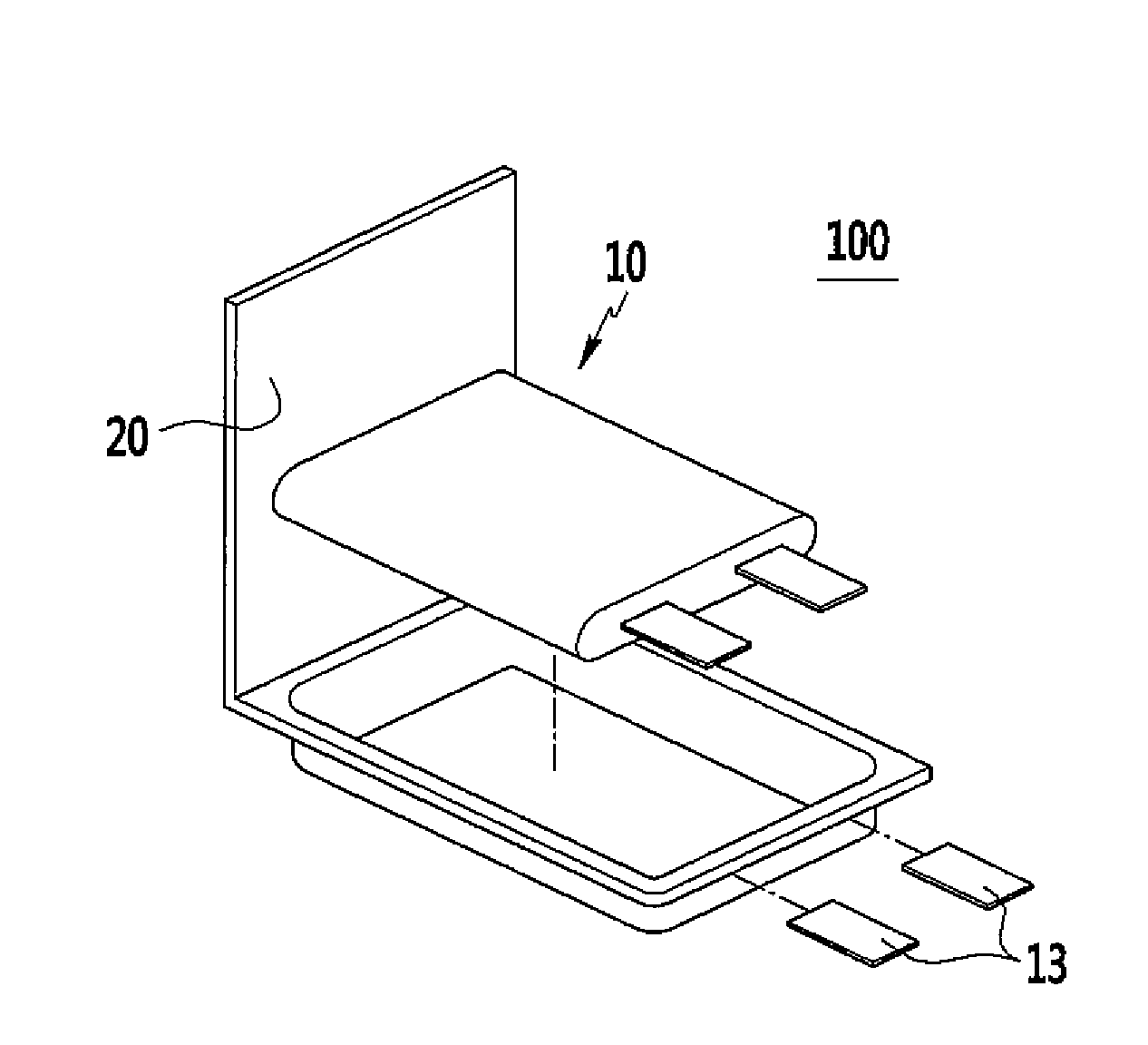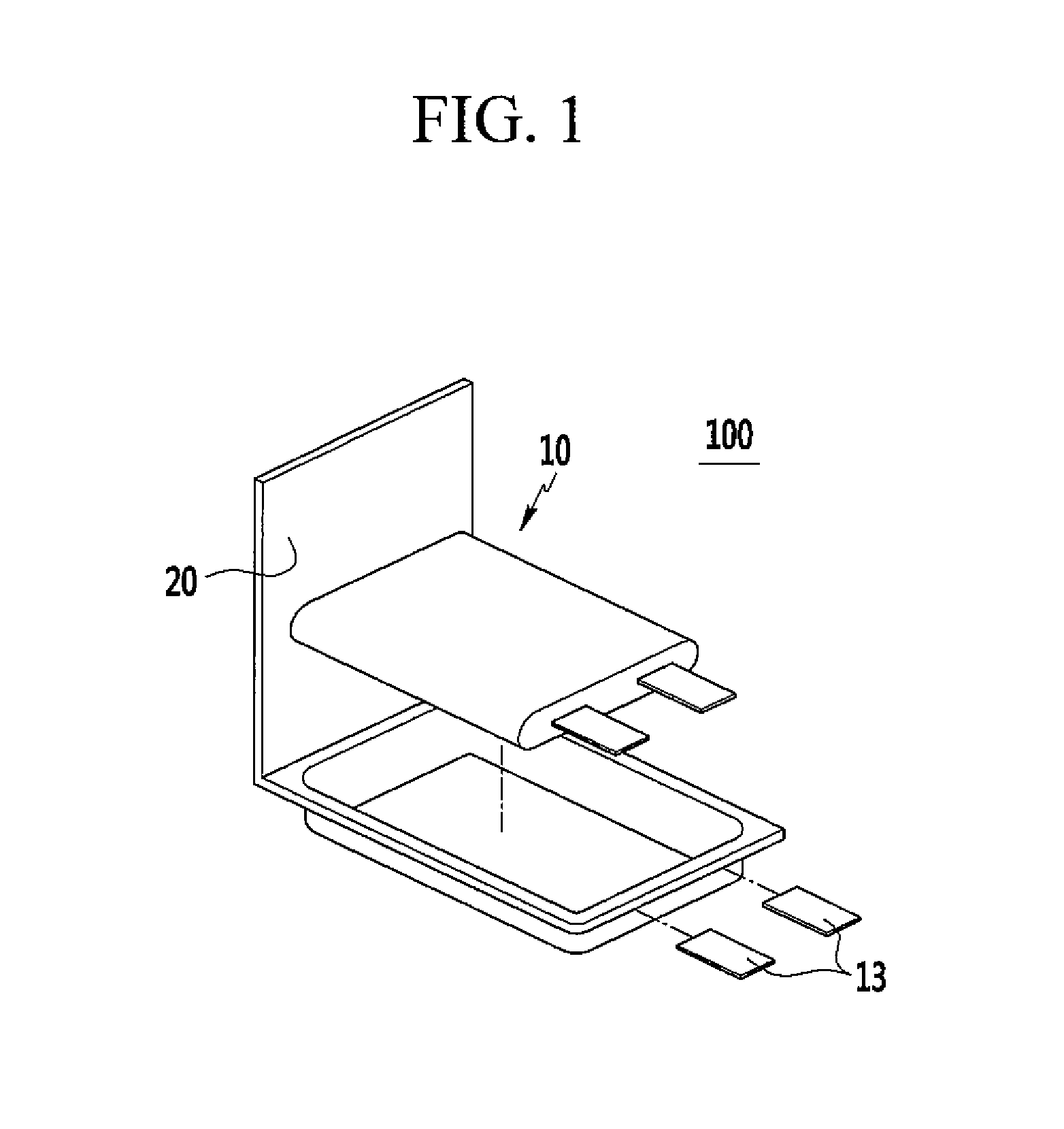Rechargeable lithium battery
a rechargeable lithium battery and lithium-ion battery technology, applied in the field of rechargeable lithium batteries, can solve the problems of sharp cycle-life deterioration of silicon-based active materials, and insufficient realization of the high-capacity required for rechargeable lithium batteries, and achieve the effect of improving cycle-life characteristics
- Summary
- Abstract
- Description
- Claims
- Application Information
AI Technical Summary
Benefits of technology
Problems solved by technology
Method used
Image
Examples
example 1
Manufacture of A Positive Electrode
[0091]A positive active material layer composition was prepared by mixing polyvinylidene fluoride (PVdF), carbon black, and a mixture of 80 wt % of LiCoO2 and 20 wt % of LiNi0.5Co0.2Mn0.3O2, in a weight ratio of 4:4:92 and dispersing the obtained mixture in N-methyl-2-pyrrolidone. The positive active material layer composition was coated on a 20 μm-thick aluminum foil, dried, and compressed to manufacture a positive electrode.
Manufacture of a Negative Electrode
[0092]A negative active material layer composition was prepared by mixing polyvinylidene fluoride (PVdF) and a mixture of 90 wt % of graphite and 10 wt % of Si—Fe alloy (a mole ratio of Si:Fe=4:6) (CV4, 3M) in a weight ratio of 8:92 and dispersing the resulting mixture in N-methyl-2-pyrrolidone. The negative active material layer composition was coated on a 15 μm-thick copper foil, dried, and compressed to manufacture a negative electrode.
Preparation of an Electrolyte Solution
[0093]An electrolyt
example 2
[0095]A rechargeable lithium battery cell was manufactured according to the same method as Example 1 except for preparing the electrolyte solution by adding an additional 3 parts by weight of LiB(C2O4)F2 based on 100 parts by weight of the mixed solvent.
example 3
[0096]A rechargeable lithium battery cell was manufactured according to the same method as Example 1 except for using a separator manufactured as follows.
[0097]The separator was manufactured by coating a coating material prepared by mixing 2 parts by weight of Al2O3 (having an average particle diameter of 200 μm) and 5 parts by weight of polyvinylidene fluoride (PVdF) based on 100 parts by weight of a substrate on one surface of the polyethylene substrate.
PUM
 Login to view more
Login to view more Abstract
Description
Claims
Application Information
 Login to view more
Login to view more - R&D Engineer
- R&D Manager
- IP Professional
- Industry Leading Data Capabilities
- Powerful AI technology
- Patent DNA Extraction
Browse by: Latest US Patents, China's latest patents, Technical Efficacy Thesaurus, Application Domain, Technology Topic.
© 2024 PatSnap. All rights reserved.Legal|Privacy policy|Modern Slavery Act Transparency Statement|Sitemap



